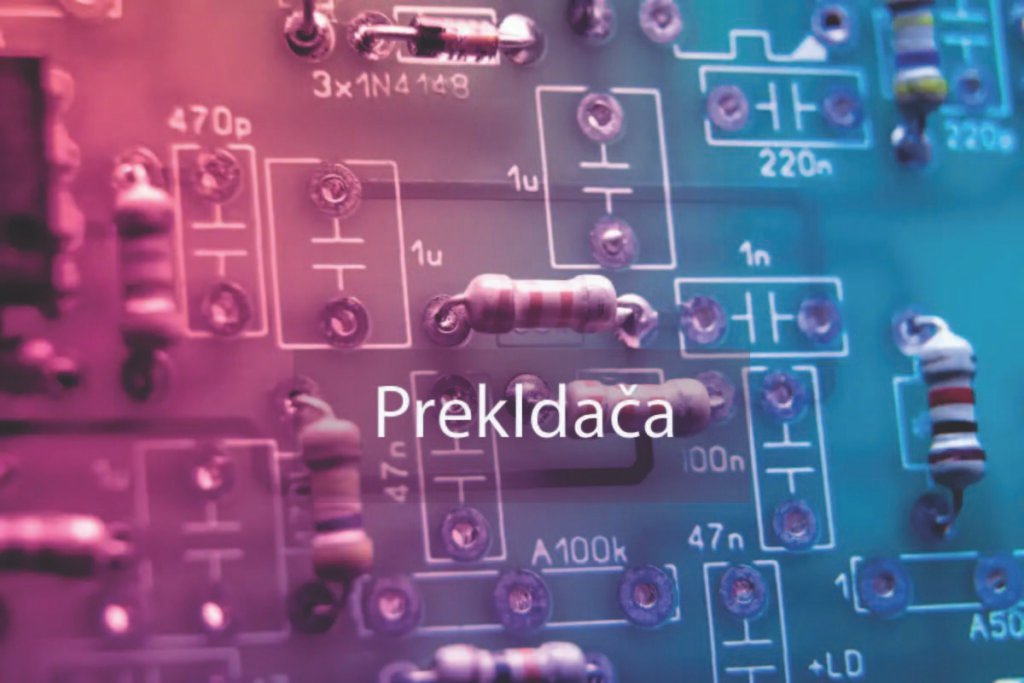Get lost in the vast ocean of understanding the essentials of Prekldača (SMPS) with our ultimate guide to switch-mode power supplies. Find out how these sophisticated gadgets improve production, minimize heat, and drive many electronics globally.
Table of Contents
Introduction to Switched-Mode Power Supplies (prekldača)
By their name showing the origins in the Czech language, namely ‘prekldača,’’ the organization defines Switched-Mode Power Supplies (SMPS) as a very new development in power management. While the linear power supplies convert the power through resistive value, SMPS use high-frequency switch regulators to convert the electrical power effectively. This methodology enables SMPS to have an efficiency of operation that has been observed to go up to 80%, while the less efficient linear regulators work at 50-60% efficiencies.
The basis of SMPS technology is the switching regulators. This is the most fundamental principle of SMPS technology. These regulators work on the application of on and off called the DC to DC converters or by varying the usage of electronic devices like transistors and diodes, which assist in boosting the voltage, reducing it, or even inverting the input voltage.
This priceless switching, frequently operating in tens of kilohertz up to several megahertz, decreases the power dissipation as heat energy, improving the general power efficiency. The amount of conversion from AC to DC and then DC to low-voltage AC also allows SMPS to be smaller and less heavy than linear power supplies. This is advantageous in modern electronic equipment where size and weight may be critical.
In today’s usage, prekldača cannot be underestimated as it determines a news broadcast’s effectiveness. From being used to power devices used in domestic settings to forming part of the components used in data centers, SMPS can be said to be vital in providing a stable power supply. The efficiency in reducing energy losses while enhancing their performance makes them essential, especially in the modern world, which seeks to save on energy.

Essential Components and Working Principles of SMPS
A Switching Mode Power Supply (SMPS), the popular non-Slovak name for which is prekldača, is a highly efficient converter designed for power conversion. The primary elements in constructing an SMPS are transformers, inductors, capacitors, and switching transistors. All the components are highly significant for managing the smooth functionality of the system and, therefore, enhancing power efficiency.
Some essential transformers within an SMPS include voltage transformers that are useful in stepping up and downstage. They divide different segments of the circuit, giving it safety and flexibility. Inductors, in turn, accumulate the power temporarily in the magnetic field, which is critical to eliminate the fluctuation of current. Like a condenser, a capacitor’s primary purpose is to hold energy in an electrical field, thus acting as a filter and helping regulate voltage.
The switching transistors can be regarded as the critical components of the SMPS work. The components switch on and off at high frequencies to control the electrical energy through the circuit. This fast toggling helps cut down energy wastage and is a critical factor in improving the efficiency of the prekldača. These components interact through a feedback control loop; this means that the output voltage is regulated to remain stable in the incidence of changes in the input voltage or the load.
SMPSs can be classified to operate in various topologies depending on the application that it will be used in. As the name already suggests, the buck converter is depressingly used to convert the voltage to a lower figure than the input. On the other hand, the boost converter increases the output voltage, which is helpful in instances where a higher output voltage is desired. Another well-known topology is the flyback converter, which is also simple in construction and offers the opportunity to obtain several output voltages from one input voltage.
Thus, understanding these components and their interrelations offers an introductory look into how SMPS works. By optimizing these components, an SMPS guarantees convenient power conversion, making it an essential element in today’s electronics.
Advantages and Applications of SMPS
Switch-mode power Supplies (SMPS), also known as prekldača, have many advantages that ensure they occupy a vital place in today’s electronic devices and industry. Energy-related benefits are one of the most significant advantages of using new-generation high-tech materials. prekldača is different from conventional power supplies, which are linear power supplies, as they employ high-frequency switching for power conversion. This method prevents energy loss, understood as increased efficiency rates often above eighty percent.
There are two more potential benefits of SMPS, including low heat production. These power supplies have high efficiency, which implies that most of the energy supplied is utilized, and very little energy is dissipated as heat. Therefore, devices with SMPS can work at a lower temperature, have a longer life, and be more efficient. Such a reduction in heat generation is beneficial in tight and encased areas where cooling can be problematic.
One of the other significant advantages of SMPS is its compact size. The device is modest in size and can easily cover large areas. The high-frequency operation reduces size and, hence, the development of smaller solutions from the system level to the component level. Although this is generally true, it has proved valuable for applications like consumer electronics, where space conservation is vital.
SMPS technology is widely used in many fields. In consumer electronics, for example, it drives laptops, smartphones, gaming consoles, and many more. In the telecommunication sector, SMPS provides voltage to the base station and network, providing a firm and unambiguous supply to the sector. The prekldača is applied in electric and hybrid vehicles in the automotive industry to manage batteries and power other controls.
Other related systems that also benefit from (prekldača) SMPS technology are renewable energy systems. Solar inverters and wind turbines employ SMPS to rectify and control the flow of power, boosting the energy extracted from natural resources. An actual case is Tesla’s home battery Powerwall, equipped with SMPS for charging and discharging batteries, and Apple’s MacBook chargers, which are slim and energy efficient.
In summary and conclusion, it can be inferred that SMPS technology is applied almost everywhere to control power electronics and ensure the power quality of electricity supply is optimized in various industries as a result of the flexibility and relevance of SMPSs in power systems. The constant evolution of new strategies that are developed and applied to SMPS consequently maintains the foundation of contemporary power management schemes.
Conclusion
Where to start with Prekldača (Switch Mode Power Supplies or SMPS), we have discussed how these power supplies have played a critical part in improving power efficiency. Moreover, SMPS technology’s principal advantage is converting electrical power, unlike the usual linear power supplies. With the help of high-frequency switching, SMPS reduces the amount of dissipated energy – that is why this unit is an inalienable part of contemporary electronics.
An evaluation of the advantages of prekldača shows the following: They bring efficiency, miniatures, and low mass that can benefit large manufacturing systems in uses such as portable devices and equipment. This also confirms voltage regulation, where they can handle a wide input voltage range while delivering stable output voltage. Due to these characteristics, SMPS is favored over linear ones in many applications where energy conversion density and compactness are essential.
Recall from part one that in choosing the right SMPS for your application, there are several important parameters to consider: the input voltage range, the output voltage and current, efficiency, and thermal management. Despite the numerous advantages that SMPS offers, various disadvantages must be taken into account and are as follows: DESIGN COMPLEXITY, which can be dealt with with good design skills, and ELECTROMAGNETIC INTERFERENCE, which can be contained using appropriate filter circuits.










